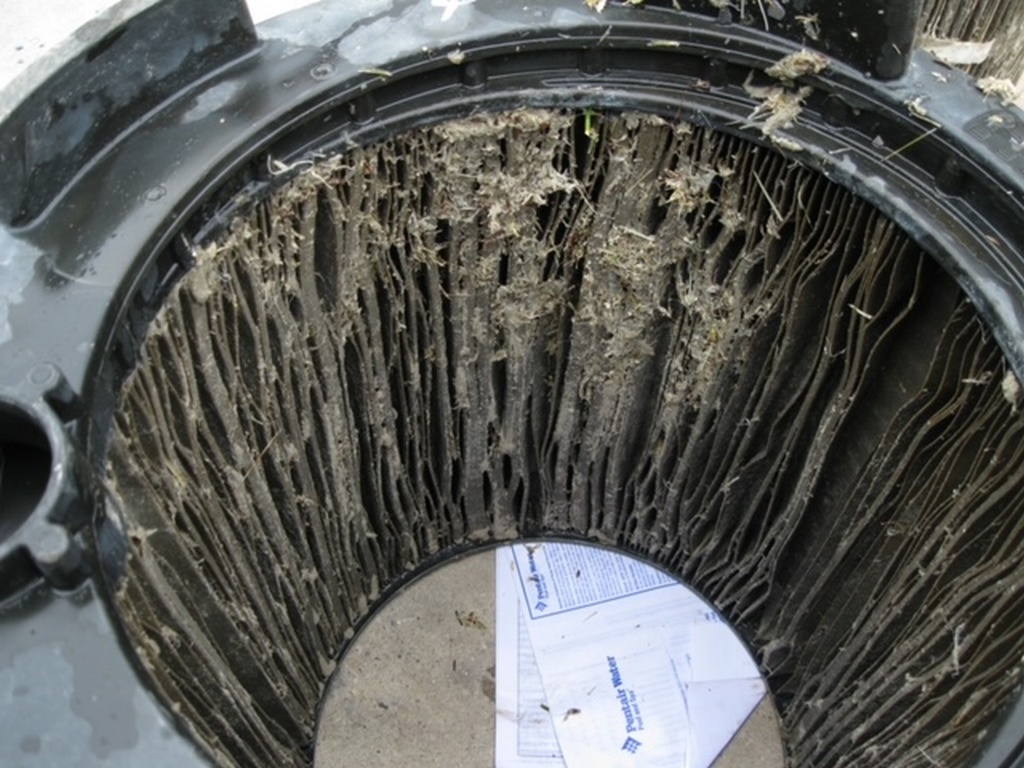Clear Water Perspectives


Convention and common practice often exist to be challenged, says Steve Kenny. In his quest to understand how to consistently achieve superior water quality, he has come to what he views as a watershed opinion – one that will directly challenge the industry’s assumptions about filtration technology.
By Steve Kenny
It’s an important distinction, and one that all of us who service and build pools would do well to embrace: Clear water is not necessarily safe water. Through decades of experience, as both a service technician and builder, I’ve learned beyond any doubt that there is, quite literally, more to water quality than meets the eye.
My experience is full of examples of how clear water can be deceiving, all of which has directly impacted my best practices when it comes to both managing water chemistry and my preferred filtration technology, and literally dozens of specific design and engineering details.
Yes, clear water is a positive, but there is so much more to consider.
INVISIBLE RISK FACTORS
At the risk of stating the obvious, perfectly clear water can be unhealthy, even fatal in some extreme situations. The main reason is simply that microorganisms are too small to be seen with the naked eye.
Yet, even in well-maintained water, they are always there in the form of biofilm stuck to the plumbing and floating free throughout the system. Most of the time, the presence of microbes is harmless, but when concentrations of harmful germs, i.e. pathogens, reach high enough levels, you have the risk of infection.
Yes, oftentimes pathogens accompany water quality conditions that can be observed in the form of cloudy or smelly water, or algae. But that’s not always going to be the case. You can have crystal clear water and still find things like E. Coli, Legionnaires or Cryptosporidium, among many others.
But the invisible risk factors don’t stop there. Water balance is also largely invisible, and we are all familiar with the perils of water with saturation index readings that either too high or too low. And, perhaps the greatest invisible culprits in water are the countless types of dissolved contaminants: the spectrum of organic compounds; plant nutrients, such as compounds containing phosphates or nitrates; and, the family of disinfection byproducts, such chloramines or halomethanes.
Fact is, most of the stuff that’s in the water is invisible.
CLOUDED BY IGNORANCE
Like many service technicians, in my early years I had not a clue. I didn’t know what I didn’t know and I thought that if the water was clear, everything was good to go.
That changed early in my tenure when a ten-year-old boy came down with severe ear infections his doctors believed were caused by swimming in the family’s backyard pool, which I serviced. The water was perfectly clear, but it was nonetheless very likely the cause of his infection. I remember thinking about how that could possibly cause permanent hearing damage. It hit me like a ton of bricks how I was responsible for doing everything I can to preventing waterborne illness. I became aware that as pool and spa service technicians, we are custodians of our clients’ health.

There are numerous other instances I could point to that have happened along the way that reinforce the concept that clear water is not always safe. Through it all, I’ve felt a professional obligation to understand as much as I can about maintaining safe and enjoyable water quality.
CAUSE FOR CONCERN
That journey has led me to believe that, yes, clear water can be deceptive; and that has, in turn, resulted in the opinion that we would do well to rethink our industry’s reliance on cartridge filtration.
To be clear, I understand why cartridge filters have become so popular. They provide microfiltration, which can create beautifully polished water, and they don’t require backwashing. In my early days building pools, I thought cartridge filters were the greatest thing since canned beer. You didn’t need to set up plumbing for backwashing, and the water would always look great.
This is all part of why cartridge filters have become the go-to option for many professionals and consumers alike. Over time, however, I’ve come to a very different point of view, one that might even be considered controversial.
That perceived clearwater advantage afforded by cartridge technology masks a significant issue that I’ve experienced consistently on the service route. Ironically, it’s precisely because cartridge filters do work to such a small size. Fact is, cartridge filters load up very, very quickly, and there’s no way to backwash them.
When the paper media loads up with particulate, and isn’t cleaned frequently enough, it starts recontaminating the water rather than cleaning it. It quickly develops biofilm and harbors bacteria and other forms of contamination. It’s like having a dirty oil filter on your car; it only makes matters worse by recontaminating the fluid it’s supposed to be cleaning.
GUNKED UP
I’ve seen it time and time again. The sanitizer demand goes through the roof, water balance becomes unsustainable, and we see all sorts of problems with algae and water clarity. By the time you open up the filter, remove the cartridges, and take the time to clean them, the damage is done.
The unfortunate fact is many builders don’t know how to manage chemistry; and, as a result, their pools aren’t properly set up for ongoing maintenance. Instead, the cartridge filter comes to the rescue and for a time, seems like a cure all. The challenge is that our industry has become so habituated by all the marketing that we don’t realize the problem is the filter itself.

As a result, we’re experiencing more bad water conditions and are forced to use more chemicals, more sanitizer and algaecides, because we wind up chasing the problems rather than preventing them.
I also found that the paper media in cartridge filters wears out over time and they come to a point where they can never be completely cleaned. I don’t begrudge service companies that make a mint cleaning and replacing cartridge filters, but I believe the benefits are negated in the form of compromised water quality.
CLEAN THINKING
For people who are committed to the cartridge filter concept, I beg you to reconsider. You’re not helping the environment. You’re not helping the consumer. Instead, in many ways, you’re encouraging the low end of the market. I see inexperienced people entering the market without knowing anything about water chemistry and don’t care to because doing the job correctly drives up cost.
I argue that the use of cartridge filters supports that fly-by-night mentality.
This all why for years, I’ve advocated the use sand filters, especially when they take advantage of advancements in media technology, such as activated glass. We use them all the time on pools we build, service and remodel, and always with great success. When combined with adequate circulation and proper water chemistry management, the result is resilient and sustainable water quality that is superior to what most people experience in their pools.
Of course, one of the big raps against sand filters is that the backwashing process wastes water. By contrast, we’re often told that cartridge filters only require 10 gallons of water to clean. This is simply not true. The fact that we’re told to soak filters in a 55-gallon container and then pressure wash them, tells you all you need to know about the 10-gallon claim.

The water-saving aspect of cartridge filtration is also dramatically undercut by the water-quality issues they cause, which results in the need to drain and replace some or even all of the water.
And, the cost and logistics of servicing cartridge filters is part of the equation. Backwashing a sand filter requires almost zero effort; whereas cartridge replacement and cleaning is ongoing, taking time, fuel, chemicals and, yes, a surprising amount of water.
BUILDERS’ CHOICE
This is part of a greater point that the builder decides how the pool is serviced by the equipment selection, but doesn’t fully realize the implications of the choices being made.
Returning to the earlier point about the invisibility of pathogens and the hidden dangers they present. I’m a firm believer in the multi-tiered approach prescribed by the Model Aquatic Health Code. That means I maintain at least .6 ppm free available chlorine, backed up by a secondary sanitizing system using UV, ozone or both.
When you combine that approach with enhanced sand filtration, well-designed circulation and routine maintenance, you can achieve water that is as safe as it is pristine in appearance.
There is no question we can all deliver quality water to our clients, but that outcome can mean challenging our assumptions, because sometimes the truth is not always perfectly clear.
Steve Kenny is an aquatic designer, builder and technician with more than 30 years of industry experience. He owns and operates SRK Pool Services, a high-end construction and service firm on Long Island, New York, and consults on projects near and far.
Opening photo of the author’s daughter, Carlee Kenny, enjoying a swim.









